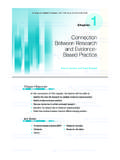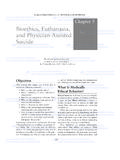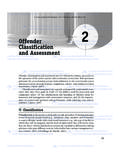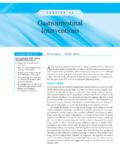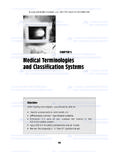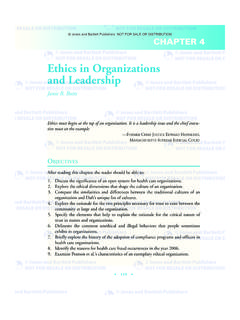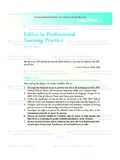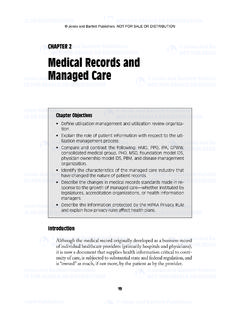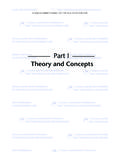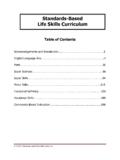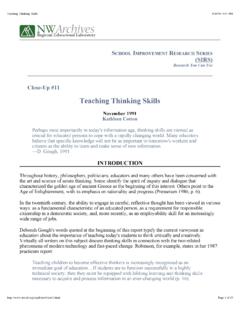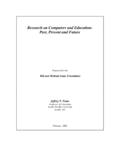Transcription of BASIC CONCEPTS OF PATIENT EDUCATION
1 2/5/09 12:29 PM Page 1. Jones and Bartlett Publishers, LLC. NOT FOR SALE OR DISTRIBUTION. Section I. BASIC CONCEPTS OF. PATIENT EDUCATION . Section I of this book, BASIC CONCEPTS of PATIENT EDUCATION , describes the importance of teaching and learning in health care and physical and occupational therapy rehabilita- tion as well as the historical development of PATIENT teaching and learning. Section I con- cludes by defining PATIENT EDUCATION within the context of rehabilitation and providing an in-depth exploration of predictors that contribute to effective PATIENT instruction. Section I is divided into the following five chapters: Chapter 1: Significance of PATIENT EDUCATION for Health Care and Rehabilitation Chapter 2: Historical Outlook of PATIENT EDUCATION in American Health Care Chapter 3: Historical Outlook of PATIENT EDUCATION in Physical and Occupational Rehabilitation Chapter 4: PATIENT EDUCATION in the Context of Physical and Occupational Reha- bilitation Chapter 5: Predictors of Effectual PATIENT EDUCATION 2/5/09 12:29 PM Page 2.
2 Jones and Bartlett Publishers, LLC. NOT FOR SALE OR DISTRIBUTION. 2/5/09 12:29 PM Page 3. Jones and Bartlett Publishers, LLC. NOT FOR SALE OR DISTRIBUTION. SIGNIFICANCE. OF PATIENT . EDUCATION FOR HEALTH CARE. AND REHABILITATION. 1. Objectives After completing Chapter 1, the reader will be able to: Identify the significance of PATIENT EDUCATION in health care. Discuss the importance of PATIENT EDUCATION in physical and occupational rehabilitation. Compare and contrast the impact of PATIENT EDUCATION in health care and in rehabilitation. Understand the importance of PATIENT EDUCATION as related to health care and reha- bilitation practices. Identify the general significance and benefits of PATIENT EDUCATION and health EDUCATION . The Significance of PATIENT EDUCATION in Health Care In contemporary health care, PATIENT EDUCATION is a PATIENT 's right and a health care provider's responsibility.
3 Governmental efforts regarding health and PATIENT EDUCATION are illus- trated in the Healthy People 2000 and Healthy People 2010 initiatives. These initiatives have encouraged the United States as a whole to participate in health promotion and disease 2/5/09 12:29 PM Page 4. Jones and Bartlett Publishers, LLC. NOT FOR SALE OR DISTRIBUTION. 4 Chapter 1 Significance of PATIENT EDUCATION for Health Care and Rehabilitation prevention through exercising, appreciating better health and fitness, avoiding workplace injuries, immunizing children against disease, and participating in preventive screening programs. The upcoming Healthy People 2020 expands the goals for health promotion and PATIENT or client teaching and learning by incorporating specific health objectives for var- ious races and ethnicities.
4 It also includes a larger, contemporary definition of the concept of health equality in relation to health risks caused by various genetic differences and pre- dispositions to diseases or disorders. PATIENT EDUCATION VERSUS HEALTH EDUCATION . PATIENT EDUCATION is a significant component of modern health PATIENT EDUCATION can be divided into two large categories clinical PATIENT EDUCATION (or clinical teaching and learning) and health EDUCATION . Clinical PATIENT EDUCATION is a planned, systematic, sequential, and logical process of teaching and learning provided to patients and clients in all clinical It is also a continuous teaching and learning process involving the health care provider and the PATIENT or client (and/or the PATIENT 's family). The goals of clinical teaching and learning are based on the PATIENT 's assessment, evaluation, diagno- sis, prognosis, and individual needs and requirements related to interventions.
5 Health EDUCATION is also a teaching and learning process similar to PATIENT EDUCATION . However, it concentrates mostly on wellness, prevention, and health promotion. Addi- tionally, health EDUCATION can be provided to individuals, groups, and communities. The BASIC focus of health EDUCATION is to change and improve societal health behaviors. In regard to both contemporary clinical PATIENT EDUCATION and health EDUCATION , patients and clients are taking a more informed and active role in health care related decisions. This new approach to health can be attributed to a variety of factors, including educational mate- rials distributed by health care providers, the abundance of medical information found on the Internet, and clinicians' increased involvement in PATIENT EDUCATION .
6 Furthermore, all health care providers have been learning new risk assessment techniques in the context of current health promotion and prevention. The illness-based thinking process has been changing to a risk-based one that involves the PATIENT as a collaborator and partner of care, sharing responsibilities with the The degree to which risky behaviors are reduced depends mostly on the PATIENT 's understanding of the significance of the risk and the impor- tance of change. In this context, the primary role of the health care provider is that of PATIENT educator and supporter, to better help patients progress and effect the needed life modification. THE PATIENT -CENTERED CARE MODEL. Health professionals are increasingly encouraged to involve patients in treatment decisions, recognizing patients as experts with a unique knowledge of their own health and their preferences for treatments, health states, and outcomes.
7 Increased PATIENT involvement in health care represents an important part of quality improvement of all health care organ- patients ' participation in health care assessments has been largely associated with better health outcomes. As a result, health care providers need to expand their PATIENT -centered care practices. Modern health care has been evolving away from a disease- 2/5/09 12:29 PM Page 5. Jones and Bartlett Publishers, LLC. NOT FOR SALE OR DISTRIBUTION. The Significance of PATIENT EDUCATION in Physical and Occupational Rehabilitation 5. centered model toward a PATIENT -centered model. The PATIENT -centered approach demon- strates the highest quality of care, offering the most effective interventions, including edu- cation, for an individual In addition, care that is truly PATIENT -centered considers patients ' cultural traditions, personal preferences and values, family situations, and lifestyles.
8 The PATIENT and his or her family are an integral part of the health care team, actively collaborating with health care providers in making clinical Consequently, PATIENT clinical teaching and learning is essential in this context because it increases patients '. responsibility for important aspects of their self-care, monitoring, and continuum of care. PATIENT -centered care also assures coordinated and efficient teaching and learning between health care professionals and providers involved in each PATIENT 's THE BENEFITS OF PATIENT EDUCATION IN HEALTH CARE. Health care institutions are recognizing the benefits of PATIENT EDUCATION in improving patients ' safety and adherence to interventions as well as patients ' satisfaction. In contem- porary health delivery, PATIENT EDUCATION has the potential to counter the rise in health care costs by reducing expenses and helping patients manage pricey chronic conditions.
9 Adopt- ing PATIENT EDUCATION programs can help health care providers and organizations produce better outcomes and enhance quality of care. Effective educational materials can help patients understand medical complexities while reducing anxiety and increasing compli- ance with instructions. PATIENT educational resources have the ability to change commu- nication into actions and improve health. Furthermore, in modern health care, PATIENT EDUCATION is supported because it adds value to the management of various diseases and disorders. Specific interventions aimed at increasing the PATIENT 's knowledge can improve the treatment outcomes of many acute and chronic illnesses. For example, when they become ill, educated patients remain motivated and adherent with treatment Direct PATIENT involvement in treatment decisions increases motivation, empowerment, adherence, and satisfaction.
10 patients should receive EDUCATION and training specific and appropriate to the care, treatment, and services provided. PATIENT EDUCATION content should be personalized to each PATIENT depending on cultural differences and specific PATIENT EDUCATION should also be available in appropriate reading levels and be customizable to individuals. Successful PATIENT EDUCATION is the result of comprehensive, proven solutions that are thoughtfully set up by health care providers and integrated into the PATIENT health care delivery system. Additionally, an efficient PATIENT EDUCATION program can yield better quality of care in fis- cally responsible health care settings. The Significance of PATIENT EDUCATION in Physical and Occupational Rehabilitation In the 21st century, PATIENT EDUCATION has become an important focus of health care provi- sions.
